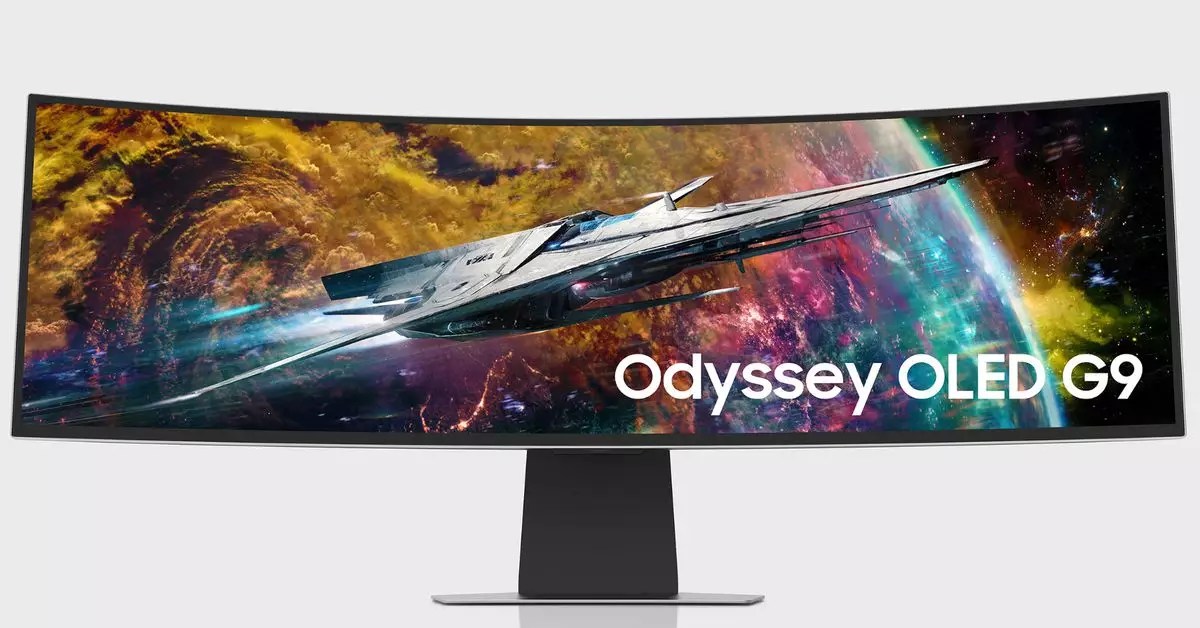In a rapidly changing technological environment, the landscape of consumer electronics is marked by fluctuating prices and enticing deals. Companies like Samsung have been at the forefront of this transformation, often employing unique strategies to draw consumers’ attention. This marketing strategy, while effective, has also led to significant discussions surrounding product quality and innovation. For instance, Samsung opted for a six-day workweek for its executives, a move that has sparked a wave of creativity—or confusion—within the company. The juxtaposition of innovative technology with hasty decisions raises questions about the overall direction of such corporations.
Samsung’s recent decision to package its 49-inch Odyssey OLED G9 gaming monitor for $1,099.99, with a $700 discount, showcases the aggressive pricing strategies brands are adopting to compete. Offering an additional 24-inch Odyssey G30D monitor for free adds a further layer of appeal, although similar prices can be found elsewhere, albeit without the bonus product. This deal exemplifies how tech giants are increasingly marketing not just individual products but their entire ecosystem, trying to ensure that consumers feel they are receiving maximum value for their investment.
When considering gaming peripherals, the details matter just as much as the price. The 49-inch Odyssey G95SC captures attention with its 240Hz refresh rate and lightning-fast response time of 0.03 milliseconds, making it an ideal choice for competitive gamers. But this monitor isn’t merely about speed; the OLED panel also ensures vibrant colors and astounding contrast, delivering an immersive gaming experience that can make any game all the more exhilarating. It is not enough for tech companies to offer products that are merely visually appealing; they must also ensure optimal technical performance to satisfy a demanding consumer base that continuously seeks the next big upgrade.
The 32:9 aspect ratio and 5120 x 1440 resolution of the G95SC offer an ultra-wide perspective that caters to modern gaming demands, further proving the necessity of high-quality components in today’s increasingly competitive gaming market. High-performance gaming monitors such as these are no longer luxuries—they are essentials for anyone serious about modern gaming.
Deals on once-exclusive titles, such as the PC version of “God of War Ragnarök” for $49.79, underscore the significance of coupling high-quality hardware with engaging content. As gamers continuously seek enhanced visuals and performance, the release of such titles becomes pivotal. With features like unlocked frame rates and ultrawide support, capable hardware can maximize their gaming experience, thus confirming the ongoing necessity for cooperation between hardware aesthetics and game developers.
Furthermore, promotional content like the Anker 6,600mAh Qi2 power bank being offered at its lowest price of $29.99 emphasizes the trend of budget-friendly options—another way companies strive to keep pace in this saturated market. The rising popularity of wireless charging has led to increased demand for supportive accessories that balance performance and affordability. A power bank that not only adequately charges but also boasts a lower price point seeks to capitalize on the growing trend of device portability.
The rapidly evolving technological landscape also has implications for consumer expectations. OnePlus’s Nord Buds 3 Pro noise-canceling earbuds, marked down to $49.99, illustrate the shift towards producing budget-friendly innovative products without sacrificing essential features like active noise cancellation and water resistance. Consequently, consumers are increasingly inclined to seek out affordable alternatives without compromising on quality. Here, the strategy of colorful and trendy designs allows companies such as OnePlus to compete more effectively in attracting younger consumers.
What we are witnessing is an ongoing evolution in the marketing strategies and product offerings of major tech brands. As consumers become more discerning and knowledgeable about their tech choices, companies are obligated to offer not just attractive prices or flashy gadgetry, but superior performance and user satisfaction. The ever-present question remains: in this high-stakes game, will companies prioritize quality as much as they champion affordability? The answer may shape the future of consumer technology for years to come.


Leave a Reply